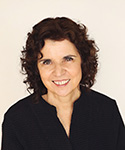Retirement Planning: You Can Never Start Too Soon
By Beth Gigante Klingenstein, NCTM
American Music Teacher, December/January 2021/2022
Download PDF
My favorite quote about planning for retirement comes from Chris Hogan, “The Retirement Fairy isn’t coming!” (2016, 113). Another favorite by Hogan, “The money you save while you’re working is the income you’ll have in retirement” (2016, 114). If you are in your 20s or 30s, maybe you feel like retirement is too far off to think about now. If you are in your 40s or 50s, maybe you are too concerned about house payments and putting your kids through college. If you are in your 60s or older…time is passing in a blink. No one wants to retire poor or continue to work far into old age, so here is the good news: There are specific steps that can be taken to secure the retirement years.
First, here are some facts about retirement that may surprise you:
-
More than 60% of adults ages 40–79 have less than $25,000 saved for retirement.
-
At age 35 you should have saved a minimum of 1–2 times your annual income in your retirement account; by age 65, that would be 8–10 times.
-
A healthy 65-year-old couple will need close to $390,000 to cover health-care expenses, including Medicare Parts B and D.
-
45% of unmarried Americans rely on Social Security for 90% of their retirement income. (By the way, the current average monthly Social Security benefit is $1,514, and who knows how long SS will even last!)
-
Experts suggest saving 15% of your pre-tax gross income toward retirement.
-
The “80% rule” of retirement planning is “plan to live on 80 percent of your pre-retirement income.”
To retire well, you need to live a financially thoughtful life before retirement; the earlier that is started the better. In my article for the August/September 2021 issue of AMT, I outlined suggestions for financial health during your working years based on Dave Ramsey’s book, The Total Money Makeover: A Proven Plan for Financial Fitness. I highly recommend you read that book, along with today’s suggestion, Retire Inspired by Chris Hogan. Ramsey gives great advice on how to become debt-free and start saving for retirement, while Hogan goes into detail about retirement planning.
Ramsey and Hogan discuss the importance of planning for retirement and then working to make that dream a reality. Hogan warns, “If you spend your money on this, you can’t spend it on that” (2016, 75). His point is, if you overspend and live beyond your means now, the money is gone and cannot be used for a wholesome retirement later. He cautions against carrying any debt (the repercussions of overspending) into retirement.
You may wonder which is better, saving or investing, especially considering how volatile the stock market can be. Merely saving is a risk when you consider inflation. Visit www.buyupside.com/calculators/inflationjan08.htm to see how inflation reduces the value of cash over time.
Hogan discusses people who are afraid to invest in the stock market. He likens the stock market to a roller coaster, with its ups and downs. The only way to ride the market well is to stay in for the long haul. Hogan states, “100% of the fifteen-year periods in the stock market’s history have made money” (2016, 102). He offers valuable tips on how to invest wisely, such as investing in mutual funds, staying diversified and seeking the help of a professional financial advisor.
What would $25,000 be worth after 30 years, saved vs. invested?
$25,000 Saved vs. Invested
|
Saved “under the mattress”
|
Invested in a Mutual Fund |
3% annual inflation
(cash is worth 3% less each year) |
10% rate of return
(compounded monthly) |
| Value after 30 years: $10,300 |
Value after 30 years: $495,935 |
Hogan also explains retirement plans. For example, did you know that a Roth 401(k) or Roth IRA could save you thousands of dollars because, unlike a traditional 401(k) or IRA, you do not pay taxes on the growth of your investment?
These two books offer tools for budgeting, eliminating debt, retirement planning, saving, avoiding unnecessary taxes and investing, and they truly can change your life. I also recommend you spend time browsing the references listed below, especially www.investor.gov/financial-tools-calculators/calculators/compound-interest-calculator. In closing, I offer one final Hogan quote, “People generally don’t enter retirement with no savings because their plan didn’t work; they retire broke because they didn’t have a plan in the first place!” (2016, 147).
Here’s wishing that your retirement plan, discipline, and dedication lead to a fulfilling and financially secure retirement!
References:
Hogan, Chris. 2016. Retired Inspired, Brentwood, TN, Ramsey Press, The Lampo Group.
Inflation Calculator: https://www.buyupside.com/calculators/inflationjan08.htm
Investor.gov, U.S. Securities and Exchange Commission Compound Interest Calculator,https://www.investor.gov/financial-tools-calculators/calculators/compound-interest-calculator
IRS, Types of Retirement Plans https://www.irs.gov/retirement-plans/plan-sponsor/types-of-retirement-plans
Konish, Lorie, Jan. 11, 2021: Just 39% of Americans could pay for a $1,000 emergency expense, CNBC. https://www.cnbc.com/2021/01/11/just-39percent-of-americans-could-pay-for-a-1000-emergency-expense.html
Mercado, Darla, July 18, 2019: Retiring this year? Here’s how much you’ll need for health-care costs, CNBC.https://www.cnbc.com/2019/07/18/retiring-this-year-how-much-youll-need-for-health-care-costs.html
Ramsey, Dave. 2013. The Total Money Makeover: A Proven Plan for Financial Fitness, Nashville, TN: Nelson Books, an imprint of Thomas Nelson.
Ramsey, Dave, 2021: How to Plan for Retirement. https://www.ramseysolutions.com/retirement/how-to-create-your-retirement-plan
Social Security Fact Sheet https://www.ssa.gov/news/press/factsheets/basicfact-alt.pdf
Synchrony Staff, Synchrony: Retirement Savings by Age https://www.synchronybank.com/blog/median-retirement-savings-by-age/

Beth Gigante Klingenstein, NCTM, is a nationally renowned author and presenter. Recently retired from a career dedicated to teaching and arts administration, she continues to be an advocate for music teachers’ financial and professional health.